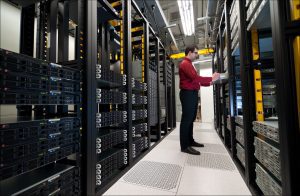Enterprises rely on their data centers to run their businesses, which means their businesses grind to a halt if their data centers go down. Thus it’s important that data center managers make sure they 1) have reliable power supply and cooling equipment, and 2) have an effective maintenance plan in place.
That first one is about choosing the right UPS vendor, one which has a track record of success and whose equipment meets the power requirements of the data center. The latter is about smart, proactive equipment management.
Data center power supply equipment has to be durable to be reliable, but nothing is built to last forever – all parts and systems have lifecycles and eventually need to be replaced. Ideally, data center pros should be able to identify UPS parts that are nearing the end of their useful lives and replace them before they fail and disrupt the business.
One way to do that is by implementing a preventive maintenance (PM) plan to ensure UPS equipment is healthy and operating properly. A service plan through a UPS vendor such as Schneider Electric typically includes regularly scheduled maintenance inspections of power equipment to check for malfunctions and signs of advanced wear.
How frequently these PM checks should be conducted depends on the size and specific model of a UPS, but a good rule of thumb is at least once a year.
A thorough preventive maintenance service contract will include a system cleaning to remove dust and grime that can shorten the lifetime of parts, end-to-end testing in all operational modes, and an environmental inspection to check for damaging conditions such as heat and humidity. For example, a routine PM visit might determine that temperatures in the facility fall outside the 64-81°F temperature range for data centers established by the American Society of Heating, Refrigerating, and Air-Conditioning Engineers (ASHRAE).
Speaking of temperatures, a regular PM program for the data center’s power and cooling equipment can save money on energy. Proper maintenance of enterprise heating and cooling systems can cut energy consumption by up to 35%.
While routine preventive maintenance can vastly reduce the potential for UPS downtime, unexpected events such as power surges can damage parts and cause outages. Data center managers can minimize downtime caused by equipment failure by having replacement parts in inventory.
Batteries and spare parts kits in particular are extremely useful to have on hand; with some training from a UPS vendor, data center professionals can replace modular batteries themselves, avoiding potential hours of downtime.
Let’s say, however, that the replacement parts aren’t on hand or that your staff just isn’t able to get the UPS back up. Your service contract also should include emergency repairs that guarantee response within a certain time frame. Sometimes that’s not fast enough, in which case data center managers should consider an upgraded service package that includes rapid response.
Avoiding or minimizing data center downtime is all about being proactive rather than waiting until you get a panicked call from the CIO. That means:
- Choosing the right equipment vendor
- Developing a comprehensive preventive maintenance strategy
- Having UPS parts on hand in the event of a sudden outage
- Getting training to learn how to monitor equipment condition and performance
- Making sure you have a service contract that includes rapid response
Remember, you can’t control everything that can happen to a data center’s power supply, but by making sure you have a good plan in place, you can make sure that unplanned downtime doesn’t damage your organization.
To learn more about Schneider Electric’s Power and Cooling Services, click here.



